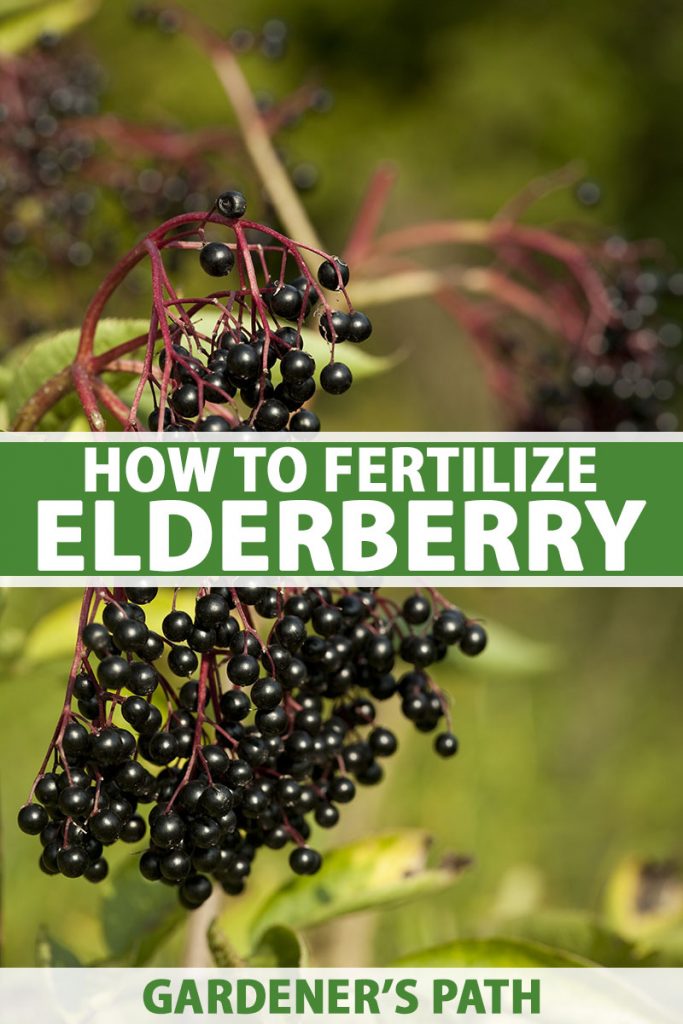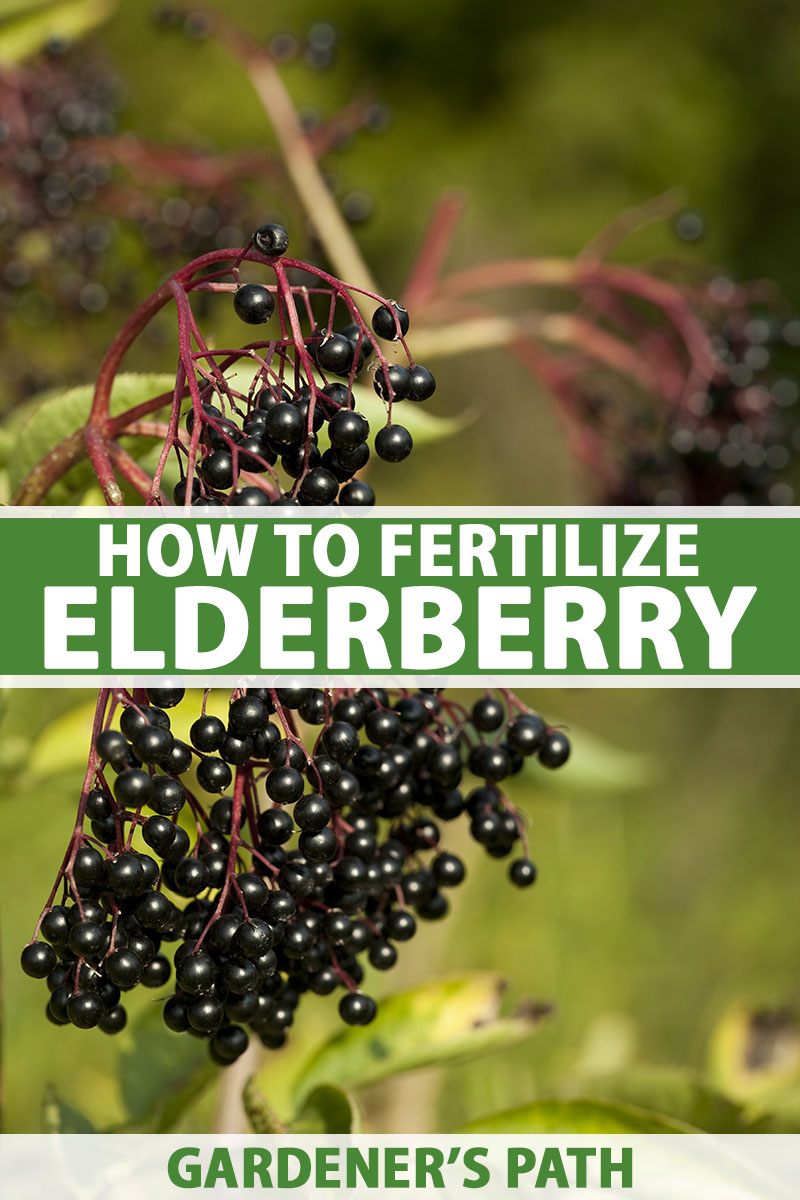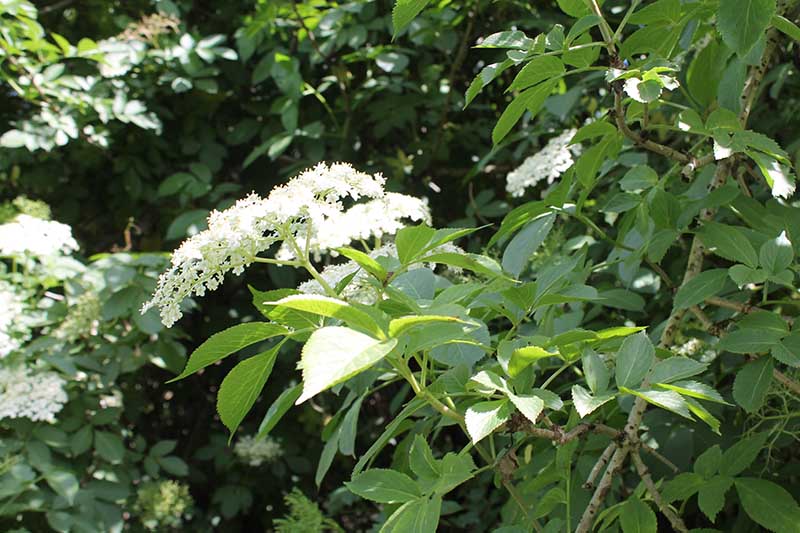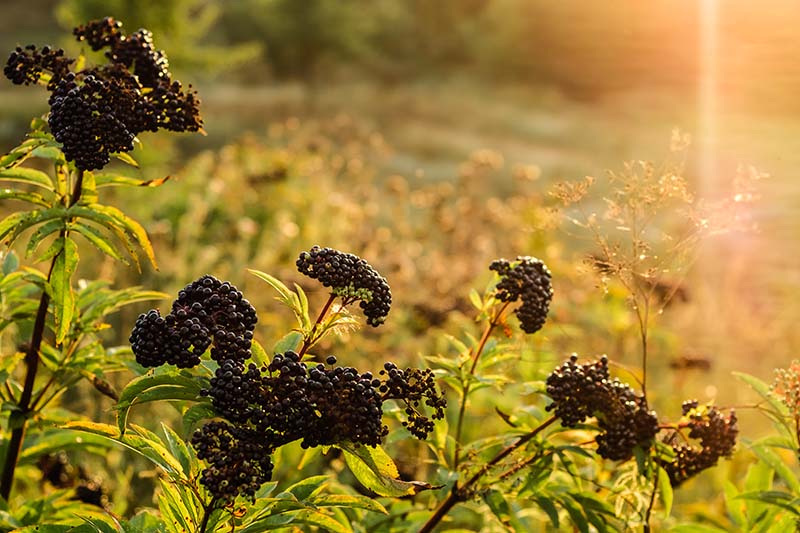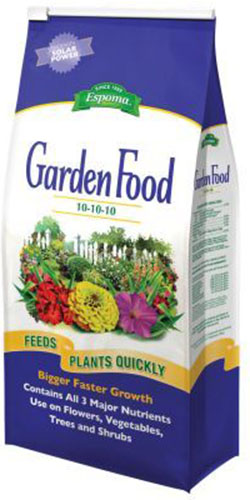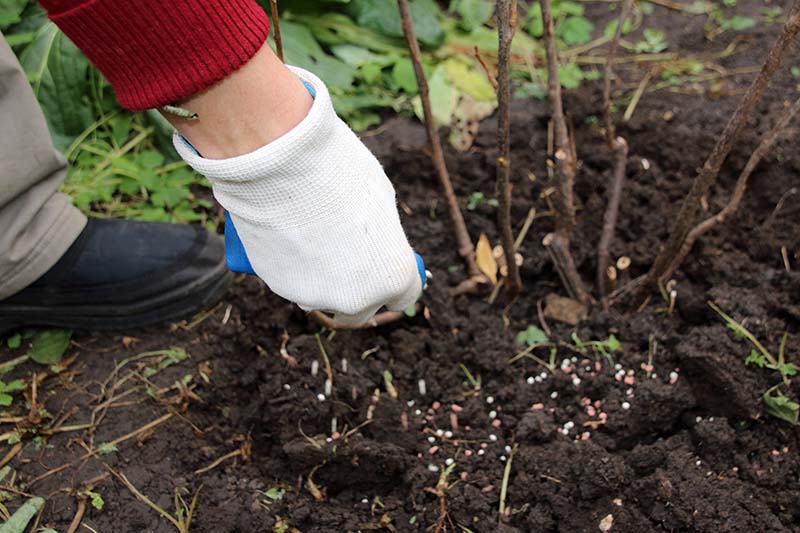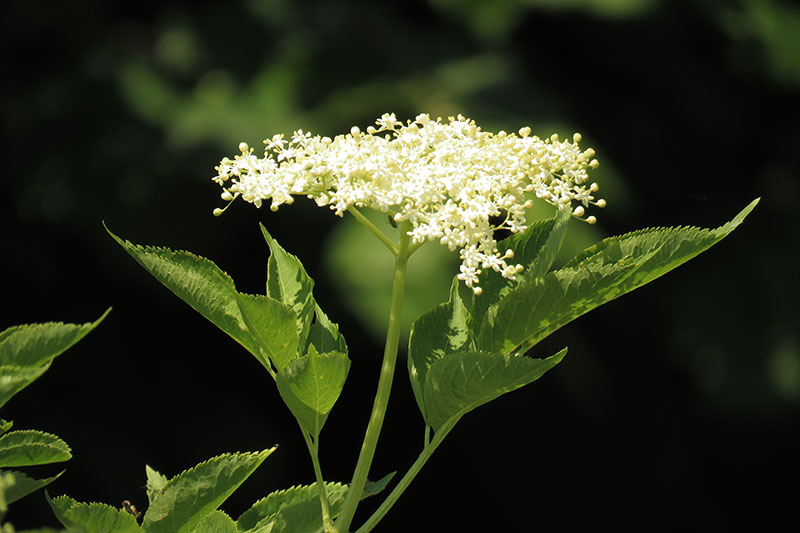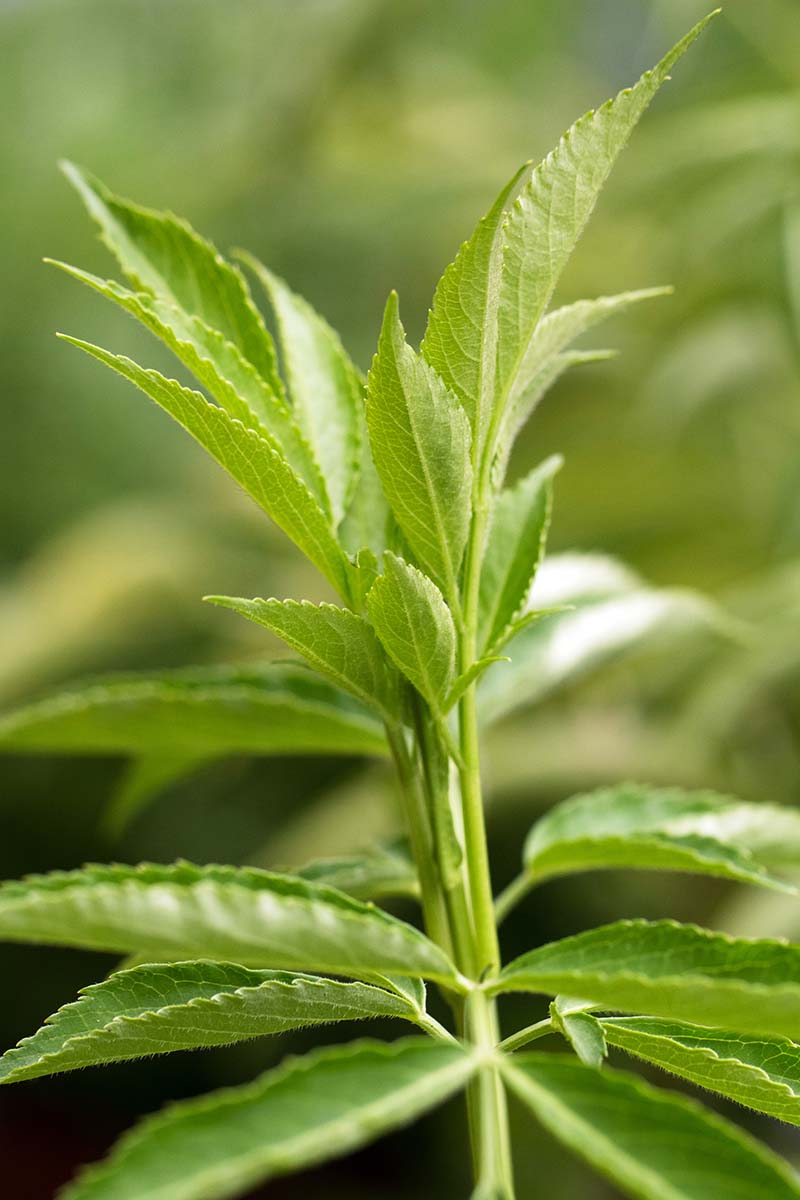Fertilizing will not only help your plant grow to its full potential, with big, fragrant flowers and healthy foliage, it will also help to promote a healthy and abundant berry harvest. If only fertilizing elderberries were as simple as tossing some nutrients at your plants when you have the time! But it isn’t. You need to apply fertilizer at the right time and in the correct amounts if you want to get this garden task right. We link to vendors to help you find relevant products. If you buy from one of our links, we may earn a commission. Here’s what I’ll cover:
Test Your Soil
Ideally, you would conduct a soil test before planting your elderberry shrub to determine the pH level of the soil, and any nutrient deficiencies. After you have amended your soil with compost and planted your shrub, it’s not recommended to apply any additional fertilizer it in the first year of growth.
Soil testing is also a good idea if you want to minimize your impact on the land, because it enables you to add only the nutrients the soil needs, without adding things it doesn’t – which is often the case when we blanket-fertilize, using a one-size-fits-all approach. Excess fertilizer can leach into groundwater and have a negative impact on the environment, so it’s best to avoid applying it except when absolutely necessary. You can get your soil tested at your local extension office, which is a department run by local counties and universities who hire employees and volunteers to share their expertise in the gardening realm. Nearly every county in the United States has one, and a soil test is fairly inexpensive. You can also buy kits online to conduct your own test. Read more about testing garden soil here.
Choose Your Fertilizer
You have lots of options when it comes to choosing a plant food for your shrubs.
You can use commercially available liquid or granular fertilizer, stakes, or organic options like compost and well-rotted manure. If you plan to use a conventional fertilizer, 10-10-10 (NPK) is a good option for most elderberry plants. The 10-10-10 refers to the amount of nitrogen (N), phosphorus (P), and potassium (K) in the mix. In this case, the product contains 10 percent of each component. You can find 10-10-10 fertilizers formulated specifically for berry plants. These typically include extras like sulfur. Sulfur can help lower the pH and increase the acidity of soil. Elderberries prefer a slightly acidic soil pH between 5.5 and 6.5. You can also use lime to increase the pH if necessary.
Application Methods
Elderberry shrubs thrive in organically rich, moist, well-draining soil. At planting time, it helps to work plenty of compost or well-rotted manure into the soil, to ensure that your young plant thrives. Elderberries have shallow roots, so use caution when working the product into the soil. Don’t dig deeper than three inches down.
Espoma Garden Food 10-10-10 A general purpose granular product, such as this granular 10-10-10 Garden Food from Espoma, available at Nature Hills Nursery, can be applied, using 1/8 cup per plant. Work it carefully into the soil and water in well. If you have multiple plants, you can use 1 1/2 pounds of fertilizer per 100 square feet.
Alternately, you can dig small, six-inch-deep holes every few feet around the drip line of the plant. The drip line is the point on the ground where water will drip off the widest branches. Apply granular fertilizer into the hole, taking care not to fill each more than 1/3 full. Fill the holes the rest of the way with soil. Liquid fertilizer should be mixed according to the manufacturer’s directions and sprayed directly onto the plant or watered into the soil, depending on the type. Liquid fertilizer is often the most convenient option if you are growing your elderberry in a container. If you’re using manure, make sure it’s well-rotted and composted to avoid burning the shallow roots. Gently work in two inches of the material all around the plant, keeping it away from the trunk. I like to apply a spray of fish emulsion once a year when the fruit is beginning to set, to encourage a robust harvest. If you use fish emulsion, mix it in a ratio of three tablespoons emulsion per gallon of water.
When to Fertilize
When you’ve decided which type of fertilizer you are going to use, you’ll need to know when to apply it.
Granular and stake fertilizing should happen once a year, either in the late fall after the plant has dropped its leaves, or in the early spring before flowering. Liquid fertilizer can be applied three or four times a year during the growing season, starting in early spring and ending before the plant sets fruit. Compost or manure should be worked into the soil twice a year, in the early spring and early fall. Fish emulsion should be applied when you first see the berries beginning to set, which means the flowers start turning into what will develop into the ripe berries. This typically happens in late July or early August, depending on where you live and the variety that you are growing. Why should we do this? Because nitrogen is depleted over the growing season, while potassium and phosphorus might not be depleted as rapidly, so you might not need to add them at all.
A Little Extra Nitrogen
Elderberries can sometimes use a little adjustment when it comes to the nitrogen in the soil. Older plants may need a high-nitrogen fertilizer like ammonium nitrate, ammonium sulfate, or urea, rather than a balanced 10-10-10 product. Espoma Urea Plant Food is a high-nitrogen granular fertilizer, and it is available from Nature Hills Nursery.
Urea Nitrogen Plant Food You can apply it at a rate of one to two pounds per 100 square feet, or apply one teaspoon around the drip line of your plant. Use it once a year in springtime to promote vigorous leafy growth. You’ll know if this is the case if your plants seem to be producing few new canes, and the canes that are produced don’t grow as quickly or as large as they used to. In that case, add a high-nitrogen fertilizer once a year in the spring, according to the package instructions.
If you notice your plant producing lots of new growth, reduce the amount of nitrogen by half, or eliminate it altogether. Plants that have access to too much nitrogen in the soil may produce new foliar growth at the expense of fruit.
Watch Your Elderberries Grow
Fertilizer is just one component in creating a healthy, happy elderberry garden, but it’s an important one. Doing the job right will ensure you have a healthy and vigorous plant, and an abundant harvest.
If you have any questions, let us know in the comments below – and feel free to share your tips! To learn more about growing elderberry shrubs in your garden, check out these guides next:
How to Grow Elderberries 7 Top Elderberry Varieties to Grow in Your Backyard How to Propagate Elderberries from Cuttings How to Use Elderflowers for Food and Medicine
© Ask the Experts, LLC. ALL RIGHTS RESERVED. See our TOS for more details. Product photos via Nature Hills Nursery. Uncredited photos: Shutterstock. With additional writing and editing by Clare Groom and Allison Sidhu.
